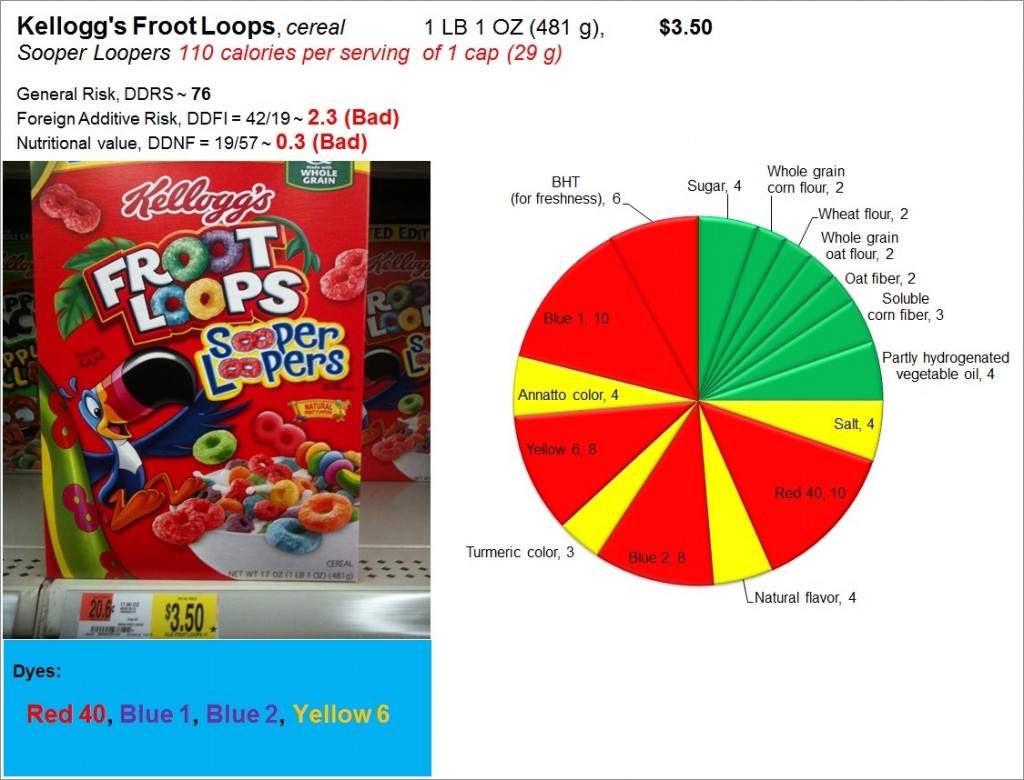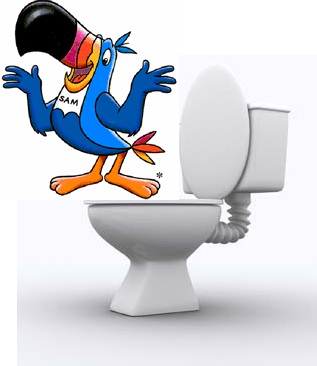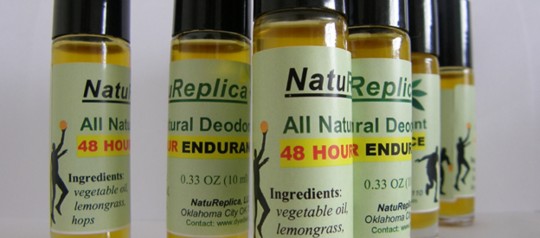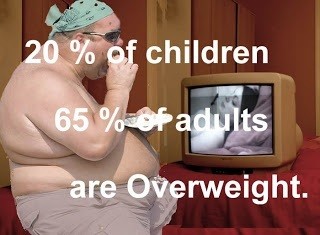3 Reasons Why Froot Loops are Fraud Poops
Kellogg’s Froot Loops cereal is bragging about how much fiber you get with the product. But this is not all the truth you should know. While DyeDiet reads and translates Ingredient Lists for you I encourage you to read, at least, Nutrition Facts to see how much sugar is in a product before you buy it. Otherwise you will be fooled by the cartoony mascot of Toucan Sam. Let’s read the label again to see what exactly is inside.
Stated value
- Good source of FIBER
- Made with WHOLE GRAIN
- NATURAL fruit flavors
Fiber is an essential part of a healthy diet. That’s because fiber helps keep the digestive system healthy so it can absorb nutrients. Kellogg provides fiber to the great tasting cereals your kids love!
Real value
DyeDiet Doesn’t Buy It!
With every serving of the Froot Loops your child will take a high chemical risk of DDFI = 42/19 ~ 2.3 and will get ridiculously low nutritional value of DDNF = 19/57 ~ 0.3. See Estimate Risk and Nutrition of Any Processed Food for reference.
Main ingredients are:
- Sugar
- Whole grain corn flour
- Wheat flour (not whole grain!)
- Whole grain oat flour
- Oat fiber
- Soluble corn fiber (a form of starch)
Reason #1: Too much sugar
According to the Nutrition Facts, Froot Loops sweetened multi-grain cereal contains 12 g of sugar per every serving cup; 12/29 x 100 = 41% by weight. This means that every box of the cereal contains 481 x 0.41 ~ 200 g of sugar. Almost a half-pack!
Reason #2: There are absolutely no fruits in the cereal.
Kellogg offers “the fun of the Fruity Adventure with Collector Cards” instead. Toucan Sam: “Taste. Amazing fruity flavors! What makes them so irresistible?” DyeDiet answer is: Oh, yeah, these chemicals do:
Citing an epidemic of childhood obesity, regulators are taking aim at a range of tactics used to market foods high in sugar, fat or salt to children, including the use of cartoon characters like Toucan Sam, the brightly colored Froot Loops pitchman, who appears in television commercials and online games as well as on cereal boxes…. “Toucan Sam can sell healthy food or junk food,” said Dale Kunkel, a communications professor at the University of Arizona who studies the marketing of children’s food. “This forces Toucan Sam to be associated with healthier products.” (Read PDF file: Food marketing to children and youth).
Reason #3: Artificial colorants added
Toucan Sam: “Colors. Fun fruity colors! Can you name them all without looking?” DyeDiet answer is: Yes, we can! Here they are: Red 40, Blue 1, Blue 2 (indigo), Yellow 6, annatto and turmeric colors. The latter two are natural and not harmful colorants. Other colorants are synthetic chemicals suspected to be responsible for allergies and ADHD in children (read the CSPI document Diet, ADHD and Behavior). According to the Wikipedia, Yellow 6 is a sulfonated version of Sudan I, a possible carcinogen, which is frequently present in it as an impurity. While we were unable to measure the amount of the colorants in this cereal because of technical difficulties, the estimated amount is about 0.2 mg of an artificial colorant per every piece or ~ 6 mg per serving and ~100 mg overall in the box.
Note that it is possible for the food industry to use natural colorants. See, for instance, Trader Joe’s Chocolate Sunflower Seed drops.
Better choices. You can find healthier cereals nearby on the same or the next shelf. Here are just a few examples: Cheerios MultiGrain lightly sweetened cereal (6 g of sugar per serving, no BHT preservative, no colorants). Cheerios Toasted Whole Grain Oat Cereal (only 1 g of sugar per serving, no colorants). Great Value Crunchy Honey Oats with Almonds lightly sweetened cereal (8 g of sugar per serving, no colorants). I do hope that this quick report helps to make healthier food choices for you and your kids!
Category: Cereals, Food Dyes Exposure








